Madrid Neighborhoods: Who Named the Most Emblematic Neighborhoods?
Madrid is a city that tells its story through its streets. Each neighborhood has a history and a voice, an echo of the past that resonates through its squares and facades. Many of their names are not random; they evoke figures who left their mark on history, culture, or the collective memory. Behind each blue street sign is a brief biography—a life that continues to beat in the present in some way.
On this tour of Madrid’s most emblematic neighborhoods, we invite you to see the city through the eyes of the people who gave them their names.
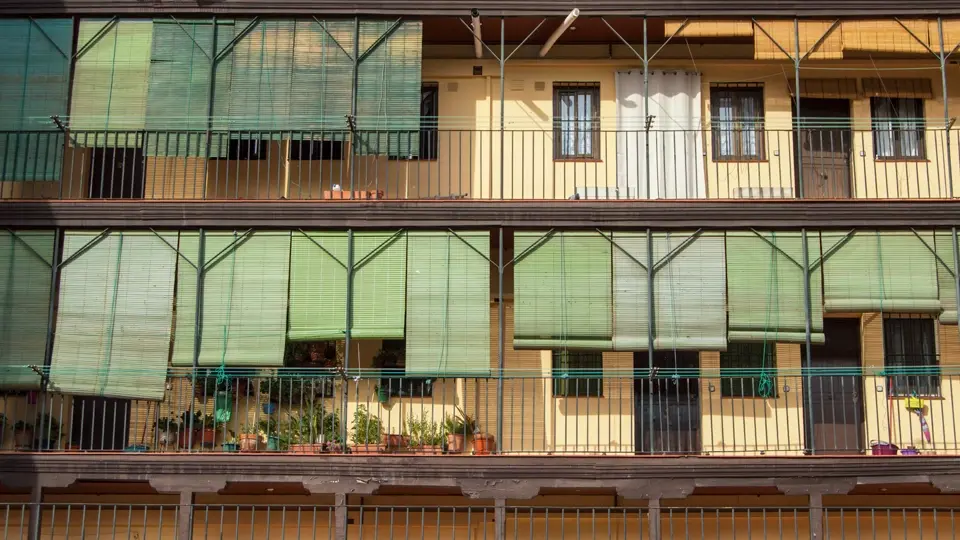
CHUECA IS THE CITY’S JOYFUL HEART
If any neighborhood symbolizes Madrid’s vitality and diversity, it’s Chueca.
The neighborhood is named after Federico Chueca, a 19th-century Madrid composer famous for his zarzuelas—those little musical gems that humorously and rhythmically portrayed the city’s popular life. Born in 1846, Chueca wrote music that is still performed at San Isidro festivities today, including “La Gran Vía” and “Agua, azucarillos y aguardiente.”
His music captured the essence of Madrid—its irony and joy—and it’s only fitting that such a vibrant, cosmopolitan neighborhood bears his name.
Today, Chueca continues to beat to the rhythm of bustle, terraces, and freedom. Past and present coexist in its streets, from the echo of barrel organs to the modern pulse of urban life.
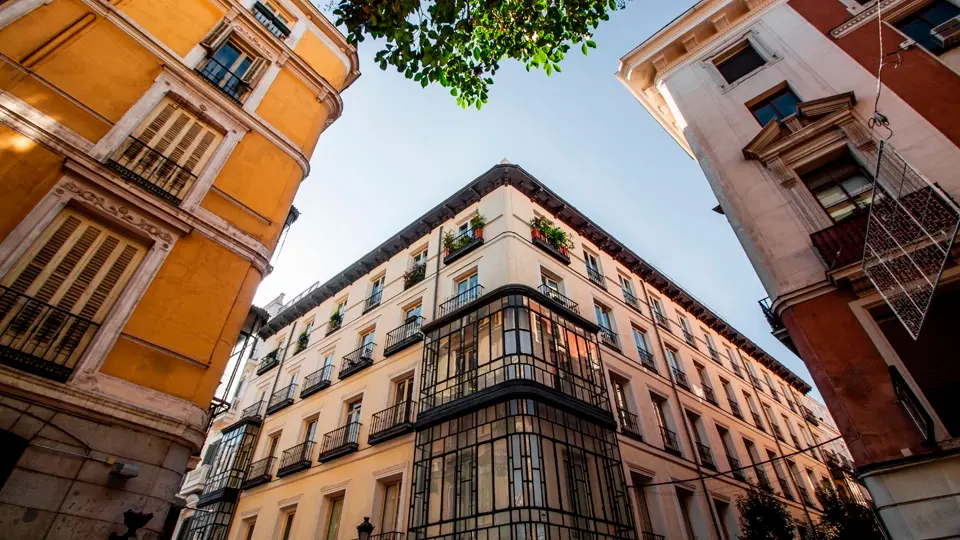
MALASAÑA: THE COURAGE OF A SEAMSTRESS
Just a few steps from Gran Vía is the neighborhood of Malasaña, named after Manuela Malasaña. She was a young seamstress who became a symbol of the May 2, 1808 uprising when the people of Madrid confronted Napoleon’s army.
According to historical accounts, Manuela died defending the city at the age of 15 or 17. She was immortalized as a heroine, and her story is remembered in Francisco de Goya’s famous painting, “The 2nd of May 1808 in Madrid,” which depicts the people rising up against the French Mamelukes.
Malasaña embodies the rebelliousness and youthful energy of the neighborhood that now bears her name—a bohemian, alternative, and creative place where history and counterculture go hand in hand. Surrounded by graffiti and vintage cafés, her memory remains present, representing a Madrid that never gives up.

LA LATINA IS A HUMANIST IN THE MEDIEVAL HEART
La Latina, one of the oldest and most characterful neighborhoods in the city, pays tribute to an exceptional woman: Beatriz Galindo, also known as La Latina. Born in Salamanca in the 15th century, she was one of the first female humanists in Spain and a Latin teacher to Queen Isabella the Catholic.
Her wisdom and charisma earned her the respect of the entire court, and her legacy transcended the academic sphere. She founded hospitals and schools in Madrid, including the Hospital de la Concepción, which is located in the area where the neighborhood that bears her nickname would later grow.
Today, La Latina retains that spirit of scholarship and popular culture, blending tradition, coexistence, and the good life. Its medieval streets, lively squares, and terraces make this neighborhood an open classroom of Madrid’s history, where the spirit of Beatriz Galindo seems to linger among the rooftops.
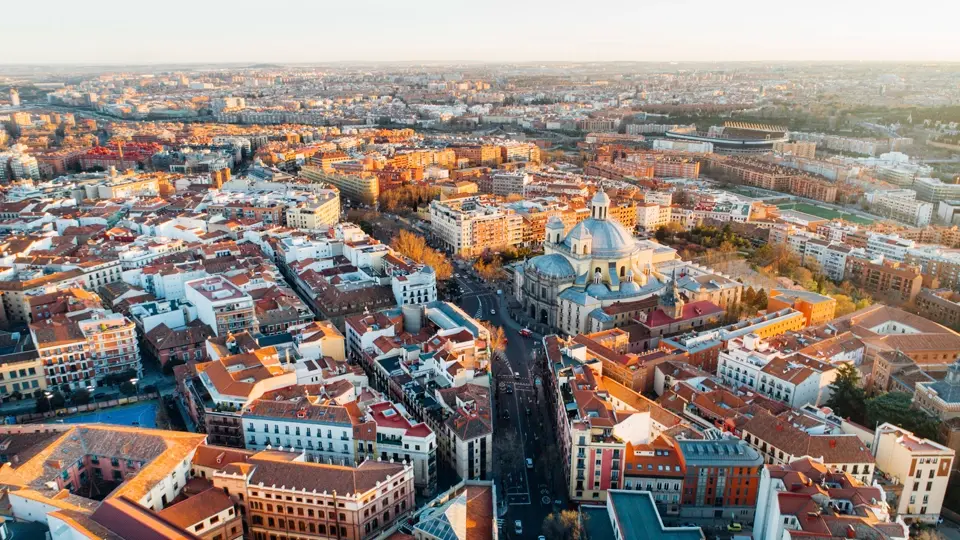
ALONSO MARTÍNEZ WAS THE JURIST WHO BROUGHT ORDER TO SPAIN
The elegant surroundings of the neighborhood are named after Manuel Alonso Martínez, a jurist and politician born in Burgos in 1827 who was deeply connected to Madrid. He was the primary author of the Spanish Civil Code, one of the most significant legal documents of the 19th century that still serves as the basis for Spain’s legal system today.
As a minister and member of parliament, Alonso Martínez embodied the desire to modernize Spain with clear and fair laws. The neighborhood that commemorates him developed around the square that bears his name, where the districts of Chamberí, Justicia, and Centro converge. The area is sober and stately, full of 19th-century buildings and institutional headquarters, reflecting the orderly and rational influence of its namesake.

MÉNDEZ ÁLVARO: THE MODERNITY OF PROGRESS
If there is one name associated with Madrid’s 19th-century transformation, it is Francisco Méndez Álvaro’s. He was a doctor, journalist, mayor, and promoter of public health. He was mayor of Madrid in 1843 and dedicated his life to improving the health and vaccination conditions of its people.
The major thoroughfare that now bears his name, Méndez Álvaro, symbolizes that reformist spirit. It is an axis connecting the historic heart of the city with modern Madrid, where stations, businesses, and cultural centers coexist in an area of intense activity.
Méndez Álvaro represents the transition from traditional Madrid to an enlightened, progressive city that was learning to take care of itself and look to the future.
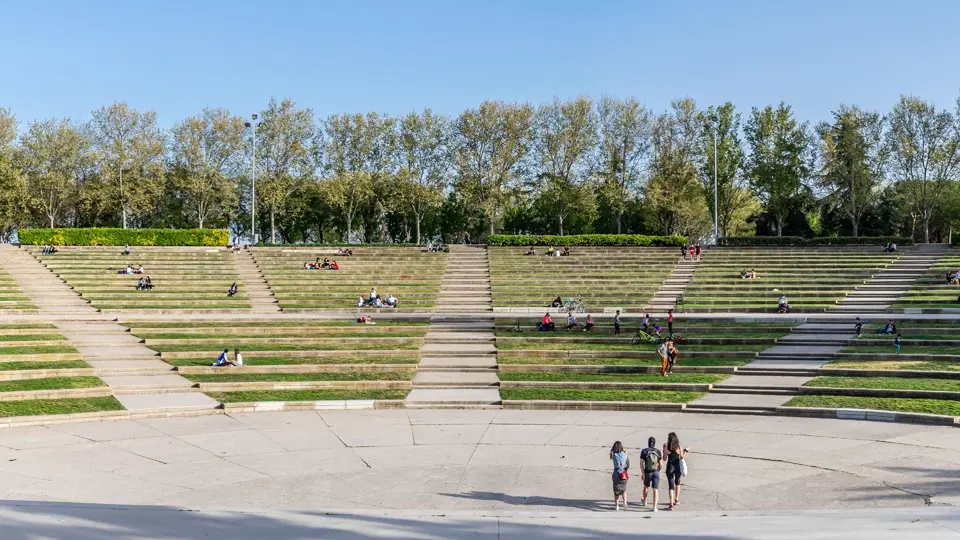
NÚÑEZ DE BALBOA: THE EXPLORER’S HORIZON
In the distinguished Salamanca district, we find the street and station named after Núñez de Balboa in honor of the Spanish explorer and conquistador who, in 1513, became the first European to see the Pacific Ocean from the Americas.
His name fits perfectly in this area, which emerged in the 19th century as a symbol of Madrid’s expansion and growth. Like Balboa, the neighborhood represents openness, exploration, and ambition.
The area’s wide avenues and neoclassical buildings evoke the elegance and vision of the discoverer and of Madrid, a city that has reinvented itself with each generation.
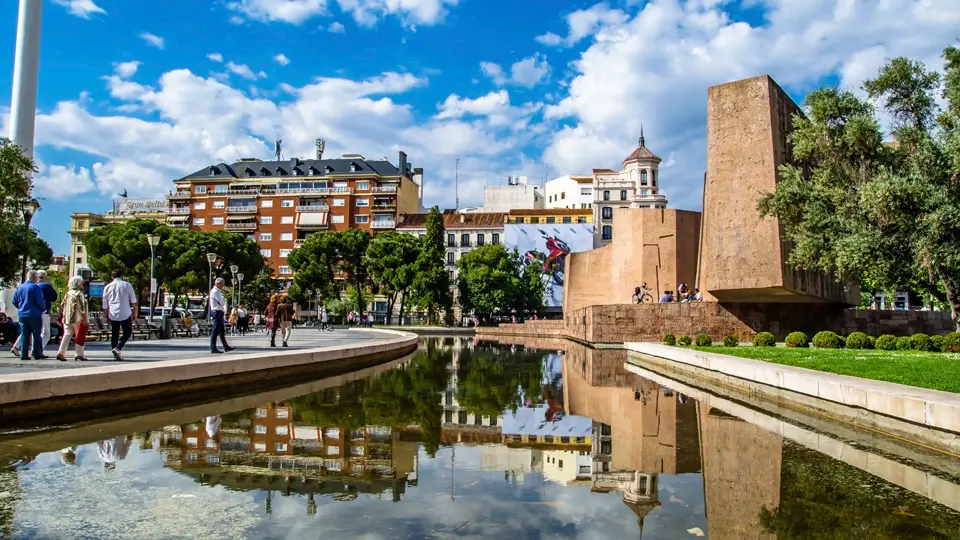
BARRIO DE LAS LETRAS: THE WORD MADE CITY
Few places condense as much cultural history as Barrio de las Letras. Its name pays tribute not to one person but to a constellation of writers from the Golden Age: Cervantes, Lope de Vega, Quevedo, Góngora, and Tirso de Molina. All of these authors lived, wrote, and dreamed among its streets.
Today, their names are engraved in the ground on Calle Huertas, as if the city itself were speaking in verse. At the Lope de Vega House-Museum, visitors can imagine the playwright writing in the warmth of an interior courtyard. In the nearby Convent of Las Trinitarias, Cervantes’s remains rest.
The neighborhood later welcomed 20th-century poets and artists, such as Gloria Fuertes, who lived there, as well as the legendary bandit Luis Candelas, whose legend still circulates in the oldest bars.
The Barrio de las Letras is not only named after literature; it is an open book in itself.
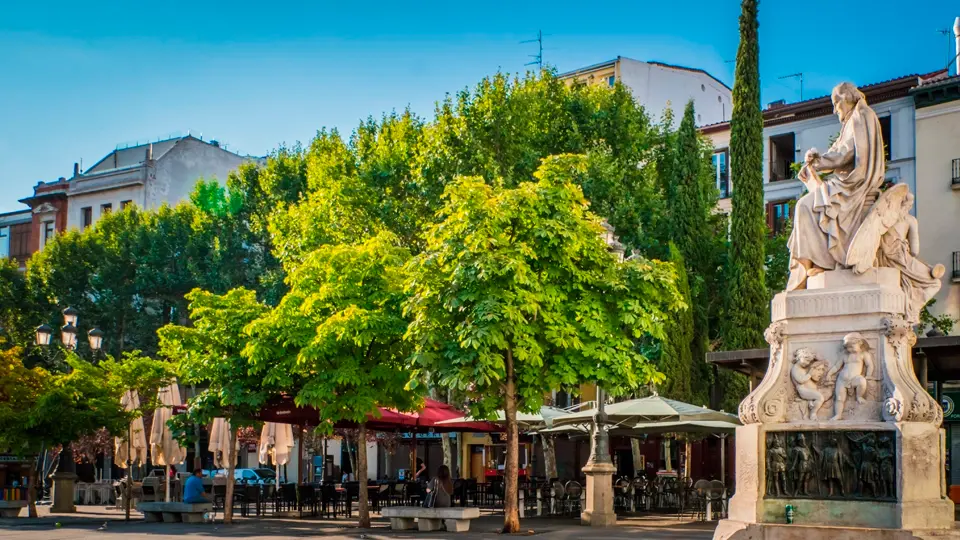
LAVAPIÉS IS THE POPULAR SOUL OF MADRID
Although Lavapiés does not take its name from a person, it deserves a mention for the notable figures who passed through it. Writers such as Tirso de Molina and poets such as Gloria Fuertes found a source of tenderness and humor in its humble streets. It was also home to Luis Candelas, Madrid’s most famous bandit. He was a “good-hearted” thief who became a romantic legend.
Lavapiés has always been a crossroads of cultures. Jews, Muslims, and Gypsies, as well as later immigrants from all continents, have made it the most diverse and humane neighborhood in the city.
Its history reflects the most diverse and supportive side of Madrid, a city that refuses to lose its identity.
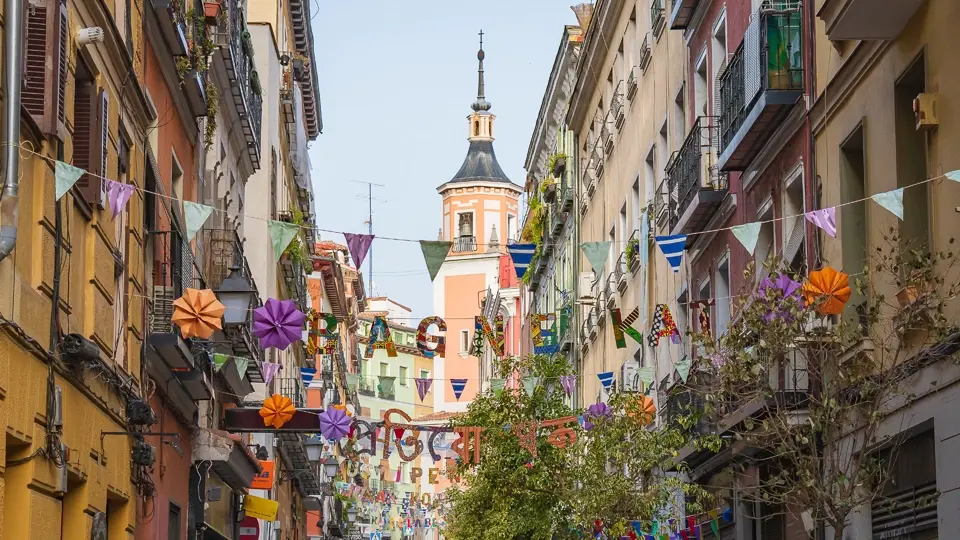
SALESAS: THE AVANT-GARDE SPIRIT
Between Justicia and Chamberí lies Salesas, a neighborhood named after the Royal Monastery of the Visitation of Our Lady. The Salesian nuns founded the monastery in the 18th century. However, it is famous for its writers and thinkers, including Ramón Gómez de la Serna, the great renovator of Spanish prose and master of the greguerías, who lived there.
Salesas combines elegance and creativity. Boutiques, cafés, and galleries coexist with the monastic calm of its origins. Like Gómez de la Serna, the neighborhood has a modern, ironic, and curious spirit—a place where art and everyday life merge.
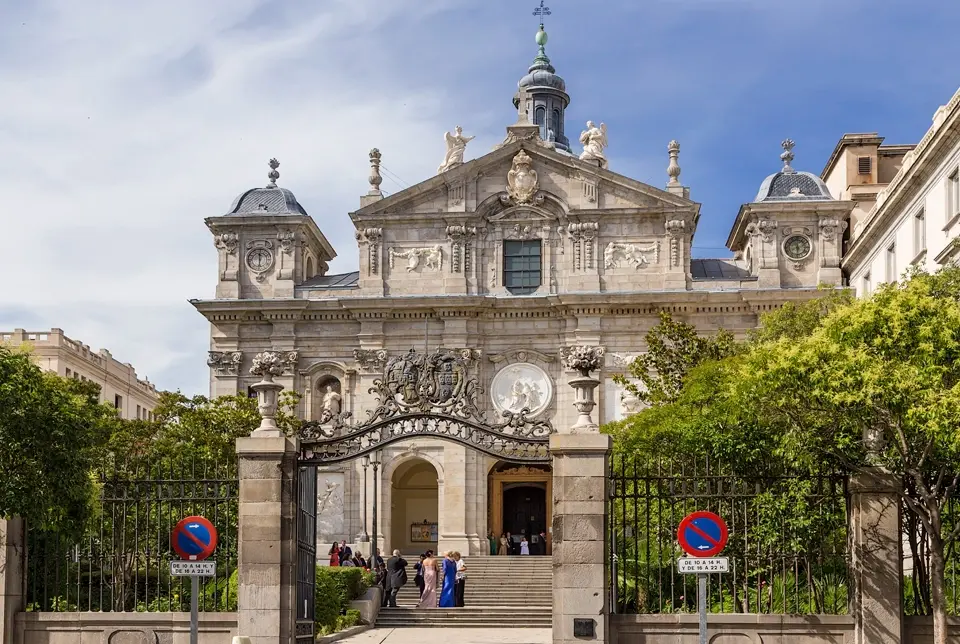
MADRID: A CITY WITH A BIOGRAPHY
In Madrid, neighborhoods are not just places; they are characters. Each name represents a part of the collective history and offers a way to understand the city as a mosaic of lives. There’s the seamstress who died for her freedom, the humanist who taught queens, the musician who made an entire era dance, and the jurist who shaped the country’s laws.
Madrid has not only given its neighborhoods their names, but also brought them to life on the big screen. Its streets have witnessed impossible loves, revolutions, comedies, and dramas that have become part of Spanish and world cinema’s imagination.
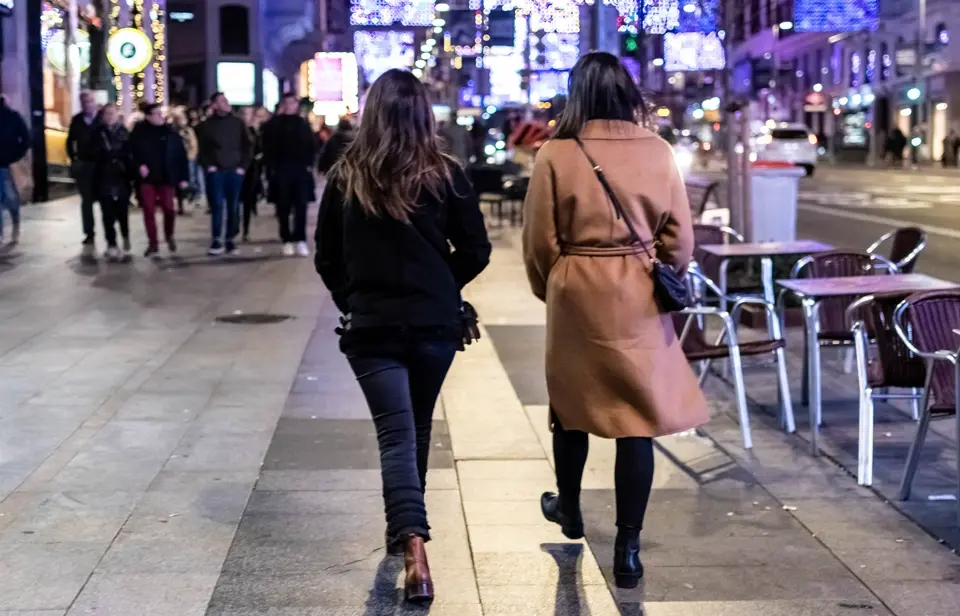
Madrid has established itself as a living film set, from the intimate and colorful portrayals of the city by Luis Buñuel and Pedro Almodóvar to international productions such as The Bourne Ultimatum, Pain and Glory, and Open Your Eyes. Gran Vía, Lavapiés, Chamberí, and Malasaña are not just locations; they are characters with their own identities and souls.
Walking through Madrid is like walking through an open book, with every corner written by a different author. At Carameltrail, we are true lovers of local stories, and we believe that learning the names of the neighborhoods is also a way of traveling—not only through the streets, but also through the centuries.
Because deep down, Madrid is written with proper names.






